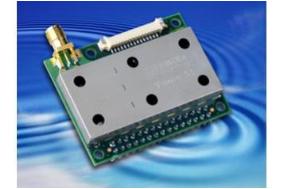Top names back plans for pan-European digital radio standard
Pure and Frontier Silicon put their support behind WorldDMB/European Broadcast Union plans for European digital standards


The announcement of the new standards was made at the IBC broadcast conference in Amsterdam by the WorldDMB Forum, the European Broadcasting Union and European consumer technology body EICTA.
It sets requirements to which all digital radio receivers should conform, and that should mean a radio bought in the UK will receive digital radio and other content anywhere in Europe, while of course sets bought within the community will also work here.
The standards cover all countries using DAB, DAB+ or DMB, together known as the Eureka 147 Family of Standards. And within the specification there are three Digital Radio Receiver Profiles:
- Profile 1, the Standard Radio Receiver. cov ers DAB radios as we know them now
- Profile 2, the Rich Media Radio Receiver, is for table-top radios with colour screens able receive audio, advanced text and picture applications
- Profile 3, the Multimedia Receiver, concerns the likes of mobile phones and personal media players, able to receive multimedia including mobile video
The standards also cover in-car digital radios, ensuring automatic retuning when driving between countries, and other functions such as advanced traffic information to give real-time updates on satellite navigationj systems.
Digital radio is due to spread to more of Europe in the near future, with Germany planning a nationwide DAB relaunch next year, and France extending coverage to 50% of its population starting at the end of this year.
Frontier Silicon provides the technology behind 80% of all the digital radios currently in use, and has recently launched its Venice 5.1 receiver module (illustrated). This covers DAB/DAB+/DMB and FM in a single unit, and is available as a drop-in replacement for the Venice 5 module already used in many digital radios.
Get the What Hi-Fi? Newsletter
The latest hi-fi, home cinema and tech news, reviews, buying advice and deals, direct to your inbox.
The switch to the new module will allow many sets currently in production to be switched to Profile 1 compliance, thus ensuring rapid availability of radios conforming to the new standards.
